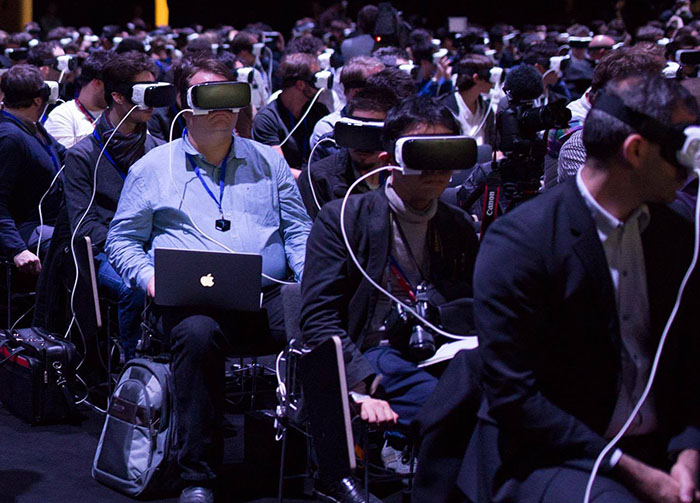
Technology is never value-neutral, and yet American culture often embraces new technologies as if they do not contain the seeds of every other aspect of American life and were freed of messy political and social consequences. The sort of pervasive technological positivism is inextricably tied to a certain spectrum of political philosophy, namely of the neoliberal and libertarian variety. The technocracy that worried many philosophers in the 20th century has now arrived, and it is potentially scarier than any of them could have even imagined.
Adam Greenfield is a leading critical voice on technology. Employed as a consultant for urban planning, design, technology and architectural firms, Greenfield has been in the trenches of emerging technology. He has conducted research for firms like Razorfish and Nokia, and taught at New York University and the London School of Economics. He has been a critical voice among urbanists on the use of urban data and smart cities, and for the past 15 years, he has run the thoughtful and influential blog Speedbird. In his book-length essay, Against the Smart City (2015), he analyzed the proposals of many (still unrealized) smart cities and projected the dystopias they could become. He took the ephemera, renderings, and brochures at face value, analyzing the technologies and value claims made by the companies promising brightly-rendered automated futures.
His latest book Radical Technologies (2017) allows us to contextualize the present moment of technophilia and how this set of technologies have radically transformed or disrupted everyday life. Chapters are divided up by technologies such as smartphones, automation, blockchain, cryptocurrencies, digital fabrication, artificial intelligence, and machine learning. Each chapter takes readers through how each technology works and though the social and political implications that these transformative technologies pose.
Throughout the book, Greenfield constructs a complex argument for critical engagement with technologies by laying out the best and worst-case scenarios for each technology. He is at his most convincing, however, in his big-picture skepticism. The zeitgeist of our moment is a general trust in business and technology leaders to change things for the better, and technologies offer an easy fix in place of uncomfortable political compromises. Technology is often used a band-aid in place of policy or to fill the void of ethical debate. We are told that the best one can hope for are nudges for certain types of behavioral improvement as we cheer on far-reaching automation for seamlessness, efficiency, and profit. These “world-changing” technologies rely heavily on the belief that they bring something positive into the world or at least require the trust that their convenience outweighs the consequences. However, they are unleashed onto the world because they support the growth of a post-Fordist capitalism as it accelerates toward a more automated future, one that Greenfield calls the “post-human everyday.” Most early adopters take it in faith that technology creators have our interest and enjoyment in mind. However, the technology sector (like architecture) often doesn’t care about its unintended effects.
Although Greenfield rarely touches on the specific ways that these technologies inform architectural practice, each of the areas he covers has major implications for our field—whether to open up new job specializations or market opportunities, or how they will radically transform our aesthetic tastes and disrupt our belief systems and ethics. Technology’s impact can be seen everywhere from Patrik Schumacher’s declaration of “parametricism as a philosophy” to the way that nearly every large design firm now has a technology wing and research groups, spinning off tech startups wildly into the ether. The ubiquity of digital fabrication, IoT, AR/VR, and smart phones has already reshaped huge portions of the AEC industry and will continue to shape it in technology’s image.
Inherent in being a critic of technology is that one can be wildly wrong in a very short amount of time. Technologies often change rapidly (sometimes within months), fall into disuse or disappear as they are superseded. What this means for writing about technology is that observations will easily feel dated. Criticism of technology remains at its most useful when it contextualizes the ways that technology is everyday life—the ways that is it is part of society. Greenfield’s guide to the everyday after the iPhone and technologies like it is an important piece of critical thinking that should resonate widely.
Greenfield will be speaking about Radical Technologies in NYC on September 14th-16th.
Thursday, September 14th 7-9pm: Verso Loft
Friday, September 15th 1pm: Columbia University GSAPP with Laura Kurgan
Saturday, September 16th 7-9pm: McNally Jackson Books with Aimee Meredith Cox
